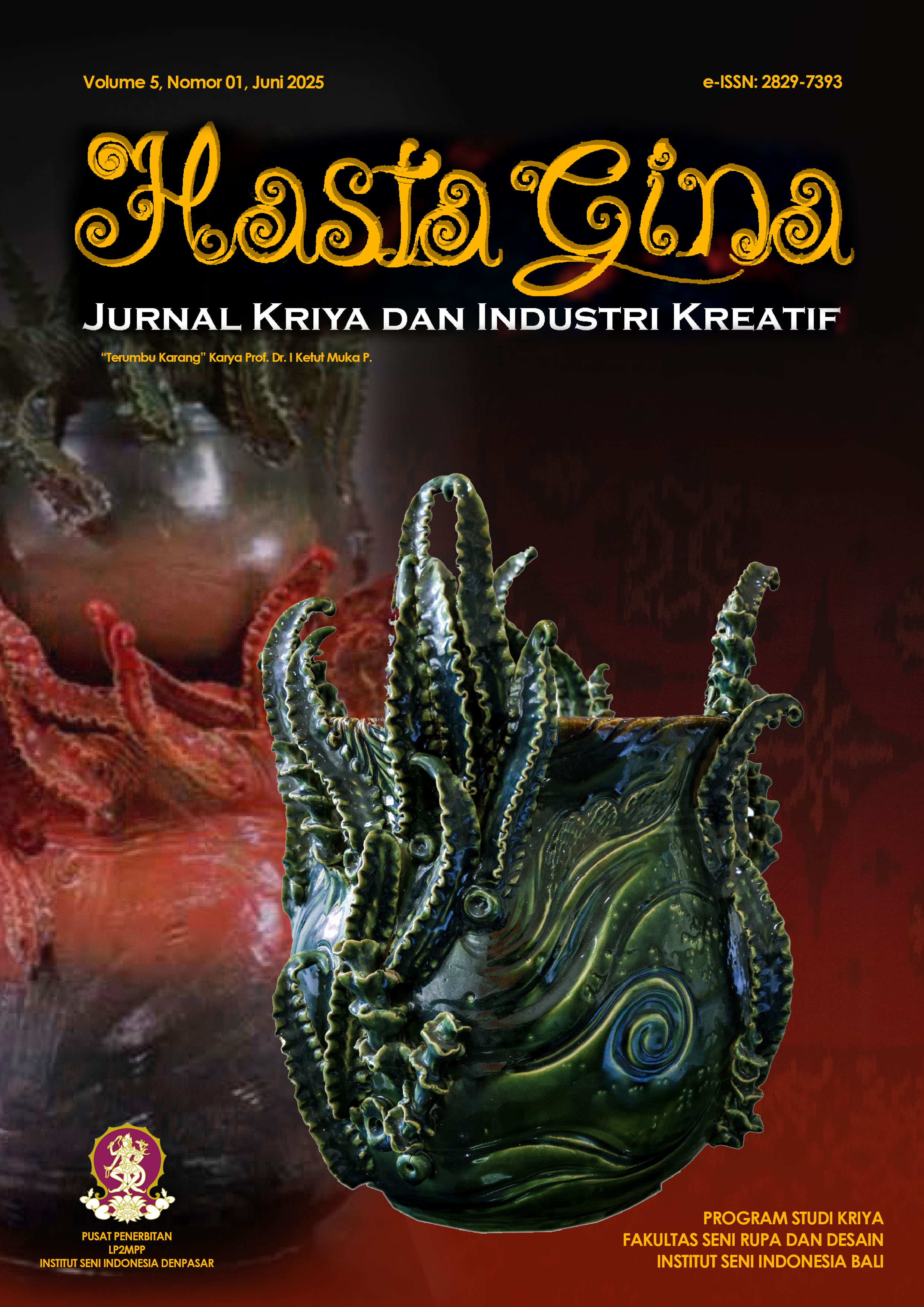Utilization of Tulle and Brocade Fabric Waste in Kebaya Design with a Circular Design Approach
DOI:
https://doi.org/10.59997/hastagina.v5i01.4443Keywords:
Tulle Waste, Brocade Waste, Kebaya, Circular DesignAbstract
The potential growth of textile waste in Indonesia is highly concerning, with an anticipated increase of 70% from
the current 2.3 tons per day over the next six years. This growth poses a significant threat as only 0.3 million tons
of textile waste are successfully recycled out of the total generated. The kebaya industry contributes to this
potential increase in textile waste, generating 0.5 to 1.5 kg of unprocessed tulle and brocade fabric waste each
week. Tulle and brocade are synthetic fibers that do not biodegrade naturally and take a very long time to break
down completely. This situation highlights the urgent need for the implementation of a circular economy system
with a design approach within the kebaya industry. The objective of this project is to design kebayas using waste
tulle and brocade fabric through a circular design approach without losing the unique characteristics of
traditional Indonesian kebayas. The design method used is the circular design approach with the Close the Loop
(CTL) framework, which consists of six stages: (1) Resources, (2) Design, (3) Production, (4) Retail, (5)
Consumption, and (6) End of Life. The result is a kebaya inspired by the shapes and silhouettes of traditional
kebayas, made from waste tulle and brocade fabric. By applying a circular design approach, the unprocessed tulle
and brocade waste from the kebaya industry can be transformed into kebayas, indicating the potential for the
industry to become more responsible by turning textile.


